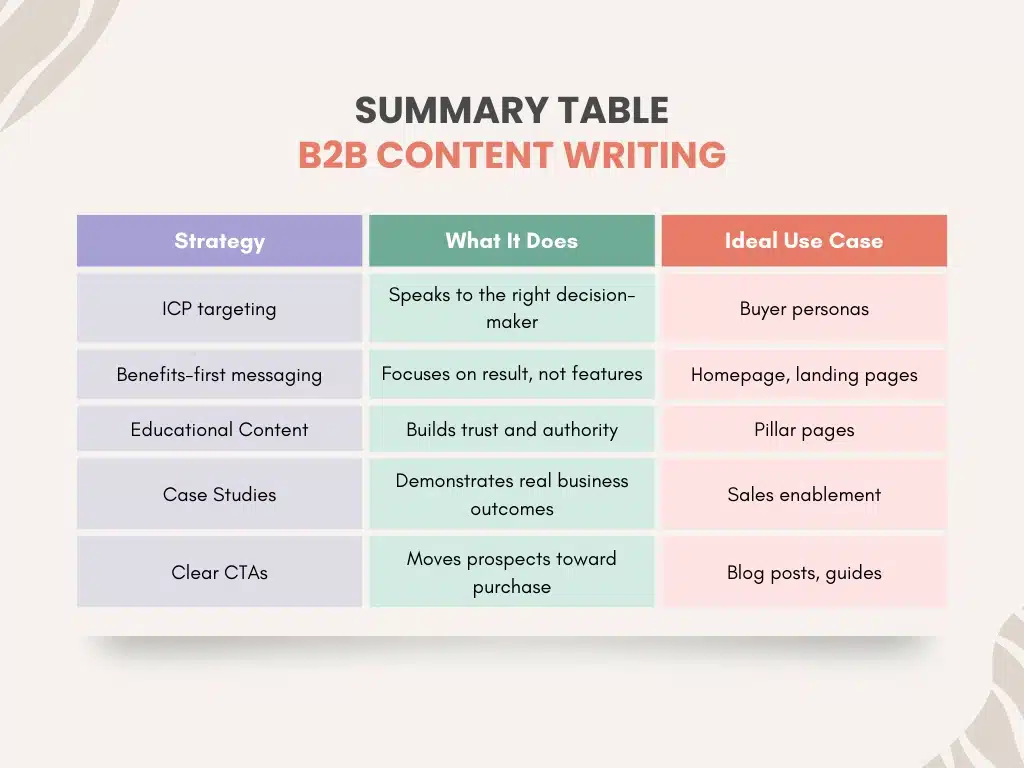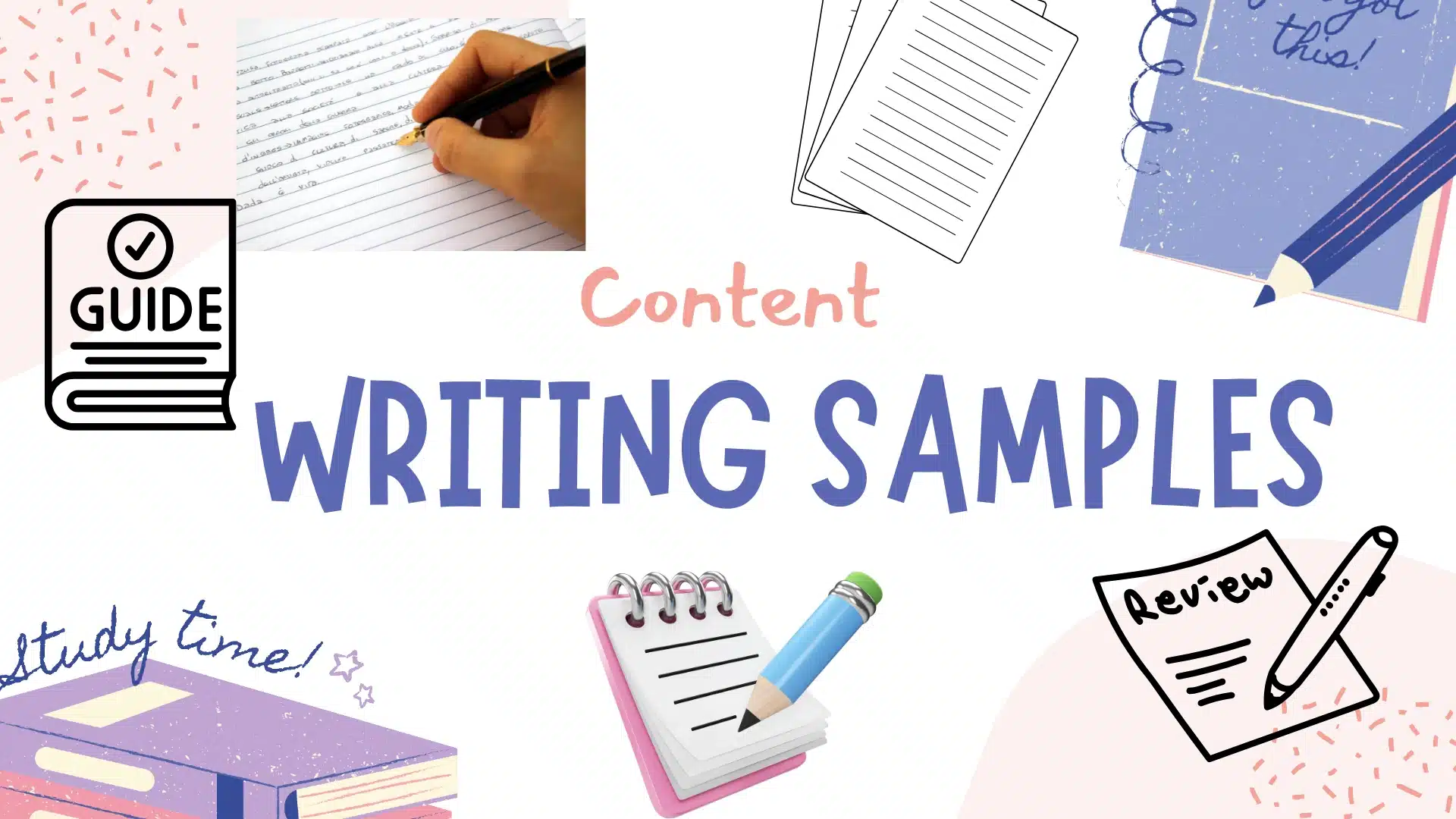Do you struggle to write content that resonates with busy executives and buying committees? You’re not targeting individuals—you’re targeting professionals with specific challenges and ROI expectations.
In this guide, you will learn how to craft B2B content that aligns with decision-makers’ needs, builds authority, and turns readers into clients—drawing on insights from SearchAtlas, HubSpot, Proofed, and others for a rich, 2025-ready strategy.
What Makes B2B Content Different from B2C
B2B (Business-to-Business) content writing is fundamentally different from B2C (Business-to-Consumer) because the goals, audiences, and decision-making processes differ dramatically.
Audience specificity:
Instead of casual readers or end consumers, B2B content is aimed at senior managers, procurement officers, IT heads, or budget owners.
These individuals read content with a business goal in mind how it saves time, cuts costs, or drives operational efficiency. For instance, a service page about cloud migration must speak to a CTO’s need for scalability and data security, not just “better performance.”
Longer sales cycles:
Unlike B2C, where impulse buying is common, B2B buyers take weeks or even months to finalise decisions.
The content must cater to multiple stakeholders, often from different departments, each with their concerns and objections.
That’s why B2B blogs, eBooks, and whitepapers must offer layered insights for both technical and executive-level readers.
Rational decision-making:
Emotional storytelling is less influential in B2B. Decision-makers want concrete ROI, statistics, and comparisons.
Your messaging must be data-backed, practical, and tied to outcomes like cost reduction, increased productivity, or compliance.
Know Your Audience: ICPs and Buyer Personas
You can’t write effective B2B content unless you know exactly who you’re writing for. This step is crucial to personalize messaging and ensure every piece resonates with the target.
Identify key audience segments:
These include the C-suite (CEO, CFO, CTO), procurement managers, marketing leads, and end-users within organizations. Each of these groups consumes content differently.
A CFO might prioritize pricing models and ROI, while an operations manager wants speed and workflow compatibility.
Map out their pain points:
Use interviews, surveys, or sales data to pinpoint what each decision-maker cares about.
- Does the CTO worry about security?
- Is the procurement team focused on vendor reliability?
- Use those insights to create pain–point–driven content that speaks to their specific concerns.
Crafting the Right Message
The way you frame your message in B2B content can make or break conversions. Clarity, benefit-driven language, and a relatable tone are essential.
Lead with benefits, not just features:
Instead of listing what a tool does, explain what it achieves. Say “cut customer churn by 18%” instead of “advanced CRM features.” This speaks directly to business outcomes and decision-maker priorities.
Simplify your language:
While your reader may be a technical professional, B2B content that’s overly complex loses attention. Stick to plain English, short sentences, and avoid jargon unless it’s truly necessary—and even then, define it clearly.
Humanise your tone:
B2B doesn’t mean boring. Use examples, analogies, or light storytelling to create an emotional connection. This makes your brand memorable and builds trust—even in the most analytical industries.
Content Formats That Work for B2B
Not all content types work equally well in the B2B space. Your format should match your goals, funnel stage, and audience preference.
Educational long-form guides:
These position your brand as a thought leader. They’re perfect for top-of-funnel awareness and help build topical authority in your niche. Example: “How to Implement AI in Enterprise Workflows.”
Case studies & whitepapers:
Use structured storytelling—Problem → Solution → Results—to showcase successful projects. B2B buyers want proof. Case studies are especially impactful in middle-to-bottom-funnel stages when a lead is considering purchase.
Decision-making tools:
Offer resources like pricing calculators, implementation checklists, or comparison charts to help stakeholders evaluate your offer easily. These assets often perform well on landing pages and in email sequences.
Structuring for Impact and SEO
Great B2B content must not only persuade but also rank on Google and provide a seamless user experience.
Topic cluster strategy:
Build a pillar page around a core B2B topic (e.g., “Enterprise CRM”) and link it to subtopics like “CRM for remote teams” or “CRM integration with ERP.” This strengthens your site’s authority and supports SEO.
Skimmable formatting:
Break content into digestible sections using H2s, bullet points, tables, and visuals. Your reader likely scans, not reads. Well-formatted content increases dwell time and reduces bounce rate.
Strong, clear CTAs:
Every piece of content should push the reader toward action. Whether it’s “Download the whitepaper,” “Book a demo,” or “Contact sales,” your CTA should align with the buyer’s stage and feel natural, not forced.
Promote & Measure Effectiveness
Even the best B2B content will fail without the right promotion strategy and performance tracking.
Collaborate with sales teams:
Sales knows which content closes deals. Involve them when planning content so you can create assets that directly support sales calls, demos, and follow-ups.
Track key metrics:
Monitor engagement KPIs like click-through rates, bounce rates, lead form completions, and content-assisted conversions. Tools like HubSpot, GA4, or SEMrush can help tie content efforts to revenue goals.
Iterate and optimize:
Don’t publish and forget. Update content based on SEO rankings, lead gen results, and feedback from the sales team. Evergreen B2B content that evolves stays relevant and keeps performing over time.
Bonus Best Practices Checklist
- Speak directly to ICPs and decision-makers.
- Emphasize business impact over features.
- Keep language clear and brevity top of mind (Originality AI, Search Atlas – Advanced SEO Software).
- Use storytelling and real-world examples.
- Establish credibility with data, quotes, and case studies.
- Keep content skimmable and easy to scan.
- Include clear CTAs tied to business outcomes.
- Optimize with SEO: keyword research, meta tags, internal linking, schema
Final Thoughts + CTA
B2B content isn’t just about writing—it’s about strategic communication. By aligning your writing with decision-makers’ needs, structuring content with clarity, and backing your claims with proof, you position your brand (or yourself) as a trusted partner.










